One platform. Unlimited possibilities.
RASTRUM™ advanced 3D cell models provide in vitro researchers with physiologically relevant cell models for next generation drug discovery and phenotypic research. Tunable stiffness, protein and peptide contents, combined with functional architectures, empower researchers to recreate their in vivo tissue microenvironment in ways not possible with conventional preclinical models. The automated, highly reproducible nature of these models allows scientists to reliably model complex biology, discover new therapeutic targets, and screen drug compounds.
RASTRUM™ 3D cell models
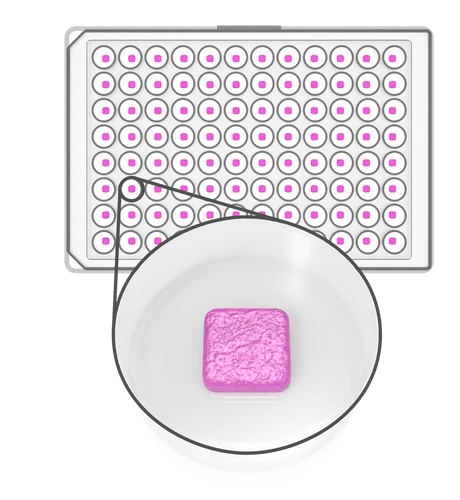
Small single matrix
A thin, single matrix model designed for fast imaging and reduced cell usage
- ∙ Immunofluoroscence imaging
- ∙ Drug screening
- ∙ Biochemical assays
- ∙ Thin model for fast, high-content imaging
- ∙ Compact model reducing number of cells required
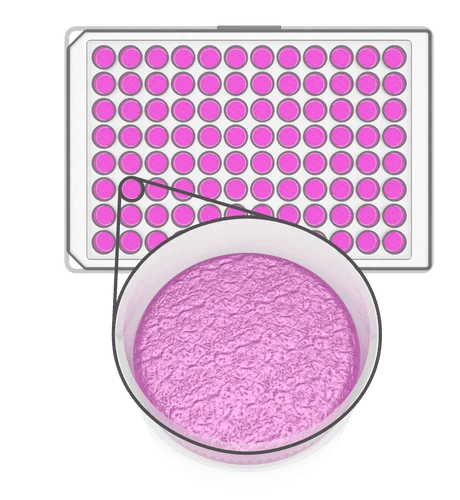
Large single matrix
A single matrix model designed for expansion and bulk downstream analyses
- ∙ DNA, RNA and protein analysis
- ∙ Flow cytometry
- ∙ Omics analyses
- ∙ Thin model for fast high-content imaging
- ∙ Large model for more cellular material
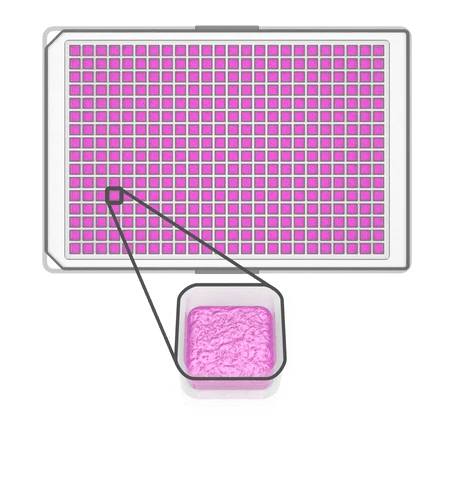
High-throughput
A single matrix model designed for high-throughput in 384-well plates
- ∙ Drug screening
- ∙ High-content imaging
- ∙ Biochemical assays
- ∙ Consistent and reproducible 3D models in 384-well plate format
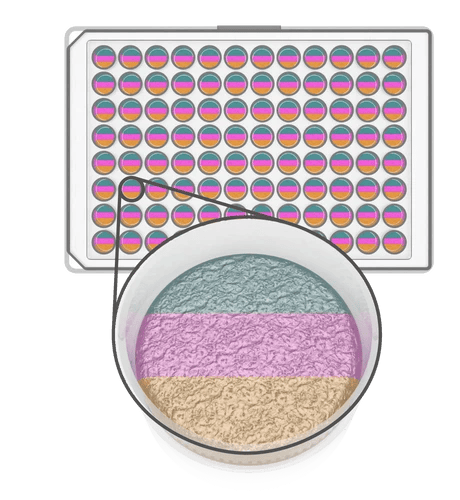
Triple matrix
A triple matrix model designed for recapitulating tissue architecture
- ∙ Migration and invasion
- ∙ Tissue architecture recapitulation
- ∙ Cell signalling and interaction
- ∙ Easy to image cell signalling and interaction
- ∙ 3D models with defined tissue architecture
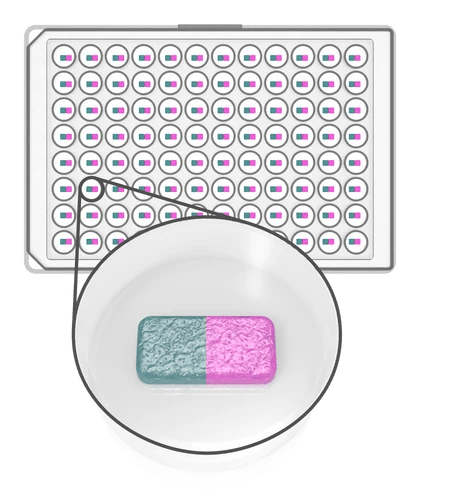
Double matrix
A double matrix model designed for recapitulating tissue architecture
- ∙ Migration and invasion
- ∙ Tissue architecture recapitulation
- ∙ Cell signalling and interaction
- ∙ Easy to image cell signalling and interaction
- ∙ 3D models with defined tissue architecture
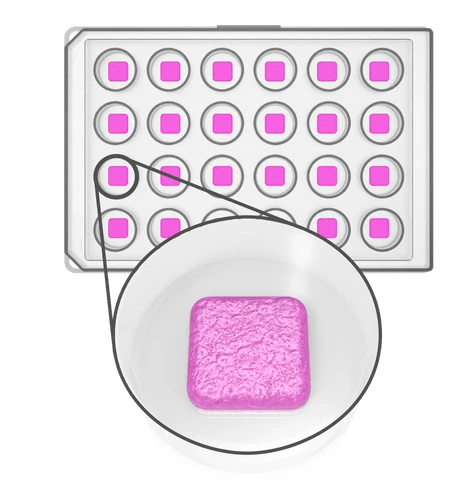
Removable
A large removable model for 24-well plates printed on coverslips designed for implantation
- ∙ Implantation
- ∙ Immunohistochemistry
- ∙ Spatial biology
- ∙ Easy to remove for microscopic imaging
- ∙ Easy to handle for embedding and sectioning
Our areas of interest
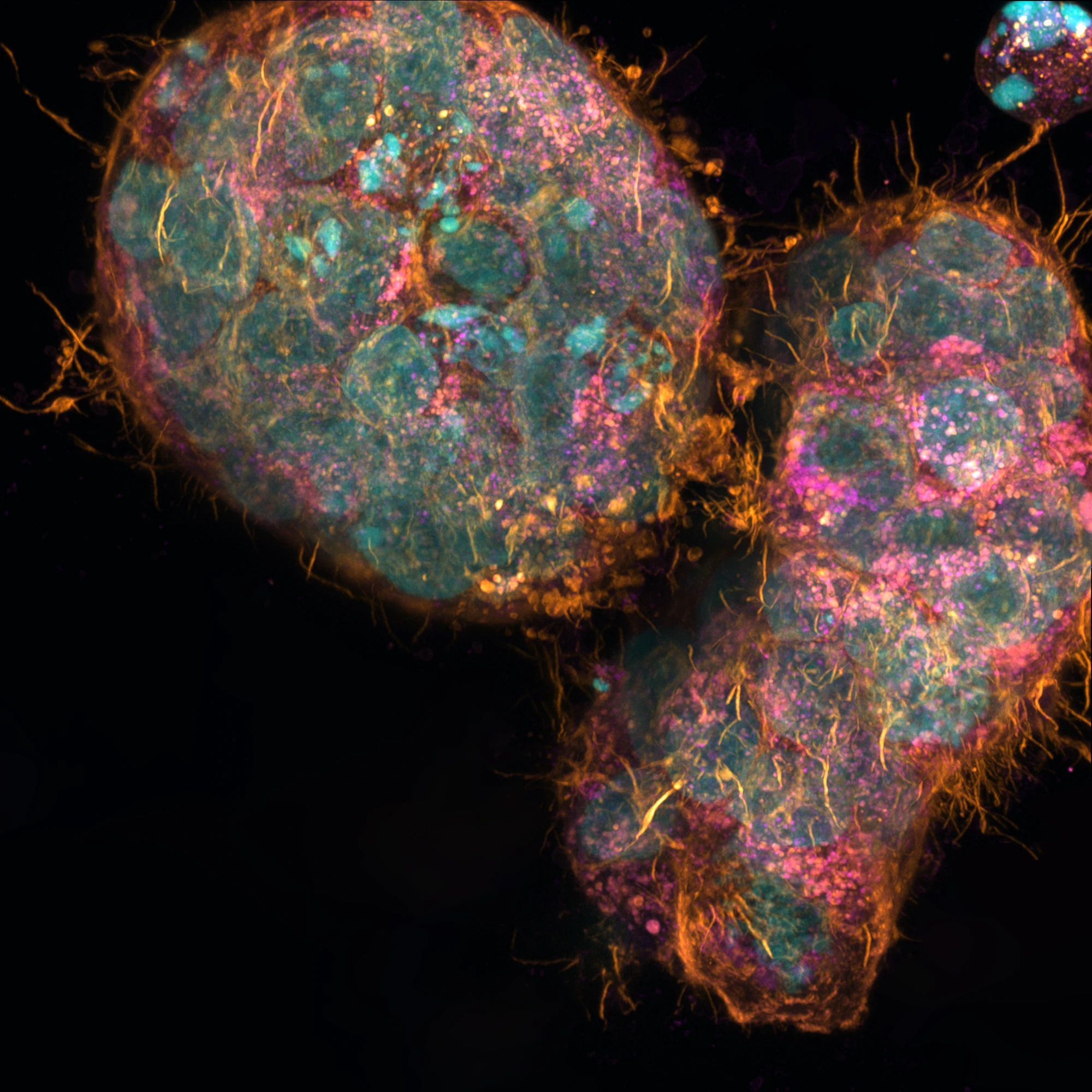
Liver
Hepatotoxicity, a leading cause of drug failure and withdrawals in clinical trials, primarily affects the liver. Animal models are unreliable for predicting human drug-induced liver injury (DILI), and current 3D cell models face challenges like poor scalability, manual handling, and workflow incompatibility. The industry requires improved in vitro human cell models for DILI. Advanced liver cell models generated by RASTRUM™ have powerful applications for DILI studies in the preclinical phase of drug discovery.
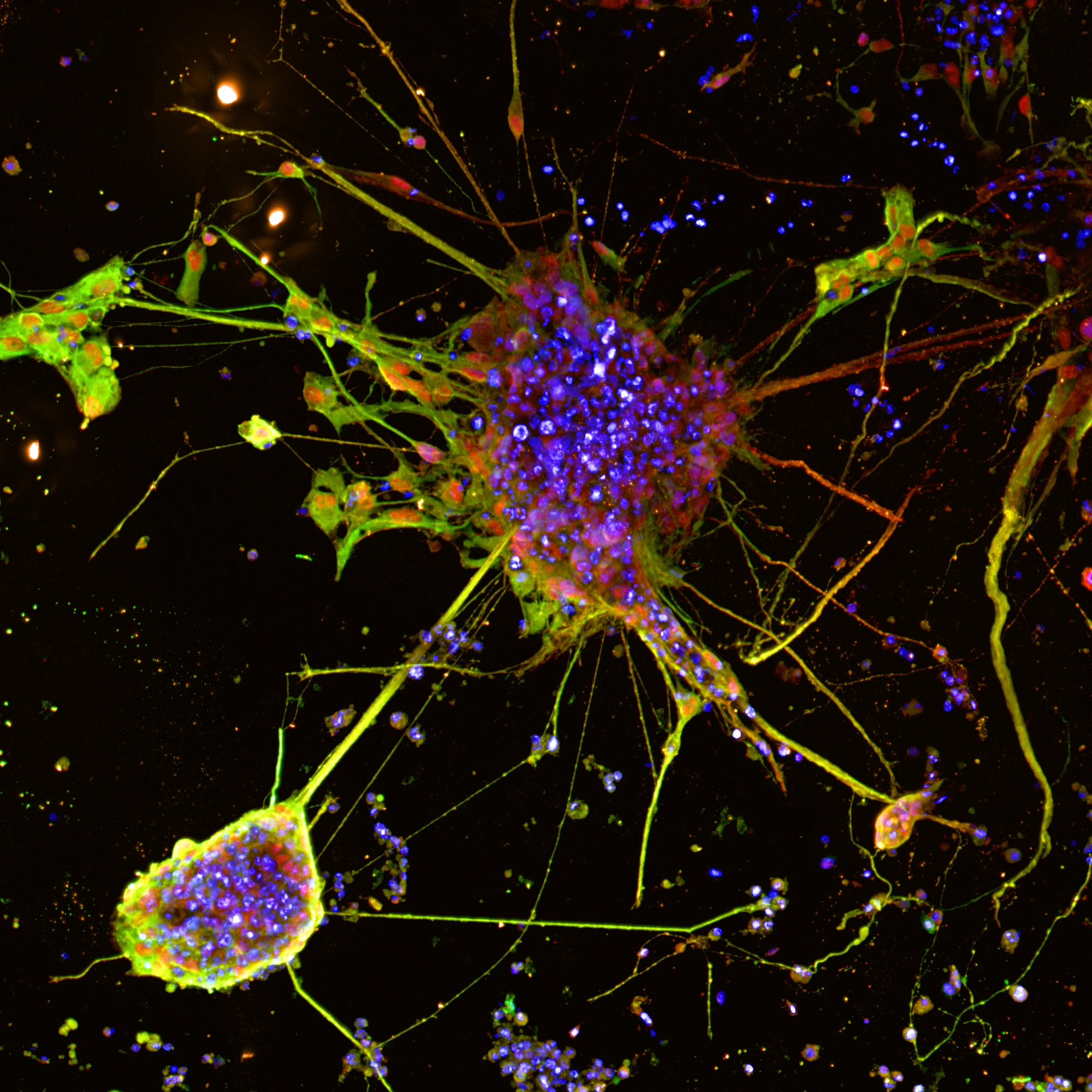
Brain and iPSCs
Induced pluripotent stem cells (iPSCs) offer great potential for neurodegenerative disease research and drug discovery. They can become various central nervous system (CNS) cell types, aiding the study of diseases like Alzheimer's, Parkinson's, and Huntington's. Creating physiologically relevant in vitro CNS models is vital for understanding disease and testing potential treatments. These models reveal disease progression at a cellular level, potentially identifying unique phenotypes and therapeutic targets. Success relies on supporting multiple functional iPSC-derived CNS cell types and replicating complex neurodegenerative disease architectures. RASTRUM™ is biocompatible with multiple iPSC-derived CNS cell types, enabling the generation of neural cell models with complex microenvironments.
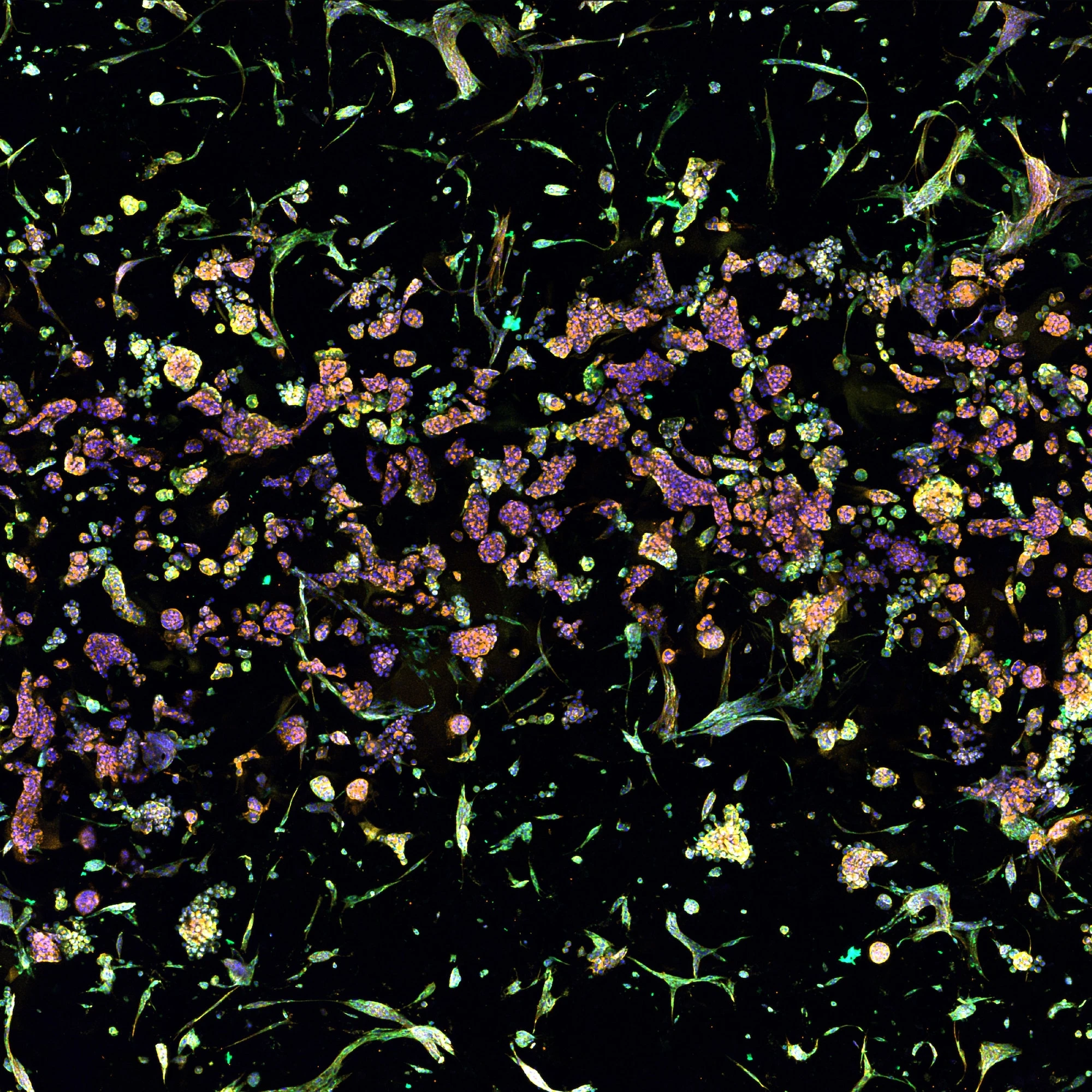
Fibroblasts
Fibroblasts play a crucial role in maintaining tissue structure, wound healing, and immune responses. Understanding fibroblast behaviour and interactions is key to unraveling the mechanisms behind various diseases, including cancer, fibrosis, and inflammatory disorders. Insights gained from fibroblast research can lead to the development of innovative therapies and interventions, making it an essential area of study in biomedical science. RASTRUM™ offers tunable, biofunctional matrices to create physiologically relevant fibroblast microenvironments, eliciting in vivo-like phenotypes for high-throughput target discovery and phenotypic screening.
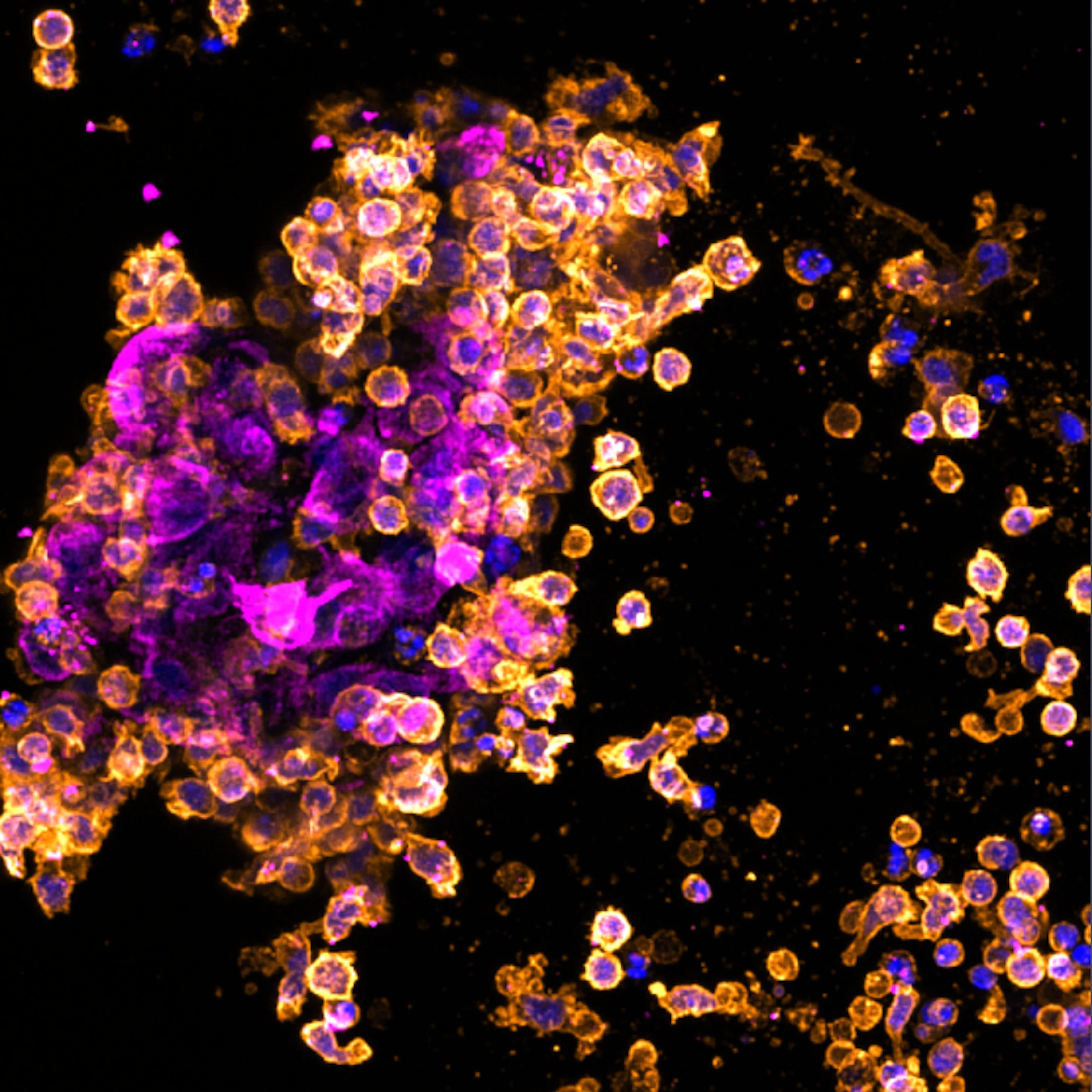
Immuno-oncology
Immuno-oncology is the study of leveraging the immune system to combat cancer and has revolutionised cancer treatment. Creating physiologically relevant in vitro assays that accurately replicate the tumour microenvironment is vital for accelerating immuno-oncology research. RASTRUM™ enables the study of tumour-immune cell interactions and the assessment of immunotherapeutic strategies in a physiologically relevant context.
